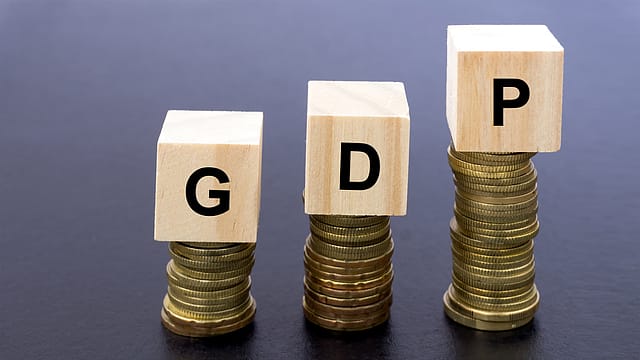India's GDP to grow at 5.1% in Q3 FY23: ICRA
ADVERTISEMENT

India's gross domestic product (GDP) growth in Q3 FY23 is expected at 5.1% owing to a base effect-led moderation from the 6.3% recorded in Q2 FY23, according to ICRA.
However, the growth in GDP over the pre-Covid levels is expected to improve further to 11.6% in the third quarter compared with 7.6% seen in the previous quarter, boosted by continued recovery in the services sector, the ratings agency says.
Economic activity in Q3 FY23 remained distinctly uneven, amid the upsides offered by the robust demand for contact-intensive services and upbeat sentiment during the festive season, says Aditi Nayar, chief economist, ICRA.
Trends in government spending were disparate, with healthy revenue spending by the Government of India (GoI) amid a base effect-led contraction in its capital spending, says Nayar. "While the services sector exports posted a sharp 25% YoY expansion, non-oil merchandise exports contracted by 8.2% in the same quarter. The advance estimates of kharif production, too, indicate a mixed trend in crop output, with a YoY rise in sugarcane, cotton, coarse cereals and oilseeds, and a decline in rice and pulses. Amid continuing input price pressures for certain sectors, we project the GDP growth in Q3 FY2023 at 5.1%," says Nayar.
The year-on-year rise in gross value added (GVA) at basic prices (at constant 2011-12 prices) is anticipated to moderate to 4.9% in Q3 FY23 from 5.6% in Q2 FY23, the ratings agency says.
While the growth in the services sector would display a base-effect led moderation, it would outpace the rise in agriculture, forestry and fishing and industry. ICRA projects the GVA growth of the services sector at around 7.4% in Q3 FY23.
January 2026
Netflix, which has been in India for a decade, has successfully struck a balance between high-class premium content and pricing that attracts a range of customers. Find out how the U.S. streaming giant evolved in India, plus an exclusive interview with CEO Ted Sarandos. Also read about the Best Investments for 2026, and how rising growth and easing inflation will come in handy for finance minister Nirmala Sitharaman as she prepares Budget 2026.
The year-over-year growth of the combined revenue expenditure of 22 state governments, for which data is available, eased to 5.4% in Q3 FY23 from 15.9% in Q2 FY23. However, the government’s non-interest revenue expenditure expanded by 13.4% in Q3 FY23 after having contracted by 1.4% in Q2 FY23, led by higher release of subsidies, especially to the fertiliser sector.
Investment activity was buoyant in Q3, with an improved performance of several investment-related indicators relative to Q2 FY23, says the ratings agency. ICRA estimates the industrial GVA to have reverted to a year-on-year growth of around 1% in Q3 FY23 after the mild 0.8% contraction seen in Q2 FY23.
Manufacturing volumes in Q3 were partly constrained by the ongoing slowdown in external demand and lag in domestic demand for consumer durables relative to pre-Covid levels, as seen in the decline in output for segments such as textiles, leather products, electrical equipment, etc., says ICRA.
However, the demand for other goods such as automobiles was robust during the festive season.
The Reserve Bank of India had earlier slashed India's GDP growth forecast for FY23 to 6.8%. The central bank expects Q3 FY23 GDP growth at 4.4%. Headwinds emanating from protracted geopolitical tensions, global slowdown and tightening of global financial conditions will slow India’s GDP growth, the RBI had said.
